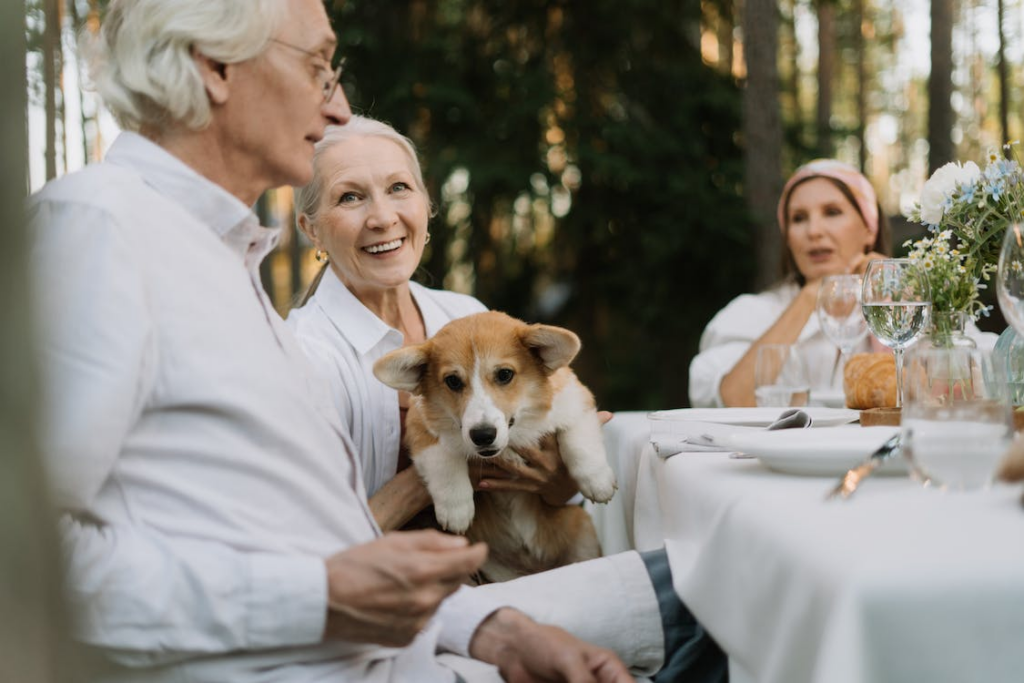The backbone of a successful senior community lies in its support network. By offering resources and services that cater specifically to the needs of the older population, these support networks significantly enhance the lives of aging loved ones. From wellness programs and educational classes to counseling services and assistance with daily tasks, this supportive framework plays a crucial role in empowering seniors to lead fulfilling and independent lives.
Moreover, social connections within senior communities cannot be overlooked. It’s well known that maintaining an active social life is essential for mental and emotional health, especially as we grow older. Forming strong bonds with peers not only reduces feelings of isolation and loneliness, but also contributes to a sense of purpose and overall happiness.
Key Takeaways
- Senior communities provide a supportive environment for aging individuals, promoting well-being.
- A strong support network is vital in addressing the unique needs and challenges faced by seniors.
- Social connections within senior communities enrich the lives of older adults, combating isolation and loneliness.
Understanding Senior Communities
As I explore the concept of senior communities, it’s crucial to understand that these communities are designed to provide a safe and supportive environment for aging loved ones. Senior living communities focus on enhancing the quality of life for seniors by addressing their diverse needs, including housing, independence, and social connections.
In my research, I’ve discovered that one of the significant aspects of a senior living community is providing appropriate housing solutions. As seniors age, their housing requirements may change, and senior communities offer various options to accommodate these needs. For instance, there are independent living apartments for seniors who can still manage their daily tasks, and there are assisted living facilities for those who require more support with day-to-day activities.
One of the primary goals of senior living communities is promoting the independence of their residents. By offering a range of services like transportation, wellness programs, and social activities, senior communities ensure that residents can maintain their dignity and autonomy as much as possible. This supportive network encourages seniors to live life to the fullest, while still having access to necessary care and assistance.
Another essential aspect of senior communities is addressing the diversity of needs of the aging population. Different seniors have different preferences, hobbies, and healthcare requirements. Consequently, senior living communities often provide a variety of activities, programs, and support services to cater to these distinct needs. By offering choices to the residents, senior communities can help enhance the well-being, both mentally and physically, of the seniors in their care.
Through my understanding, I have learned that the key to successful senior living communities lies in their ability to create a safe, inclusive, and supportive environment that fosters respect, dignity, and independence for aging individuals. By addressing the diverse needs of seniors and catering to their housing and activity preferences, senior communities play a vital role in promoting a higher quality of life for our aging loved ones.
The Importance of Support Networks
As an individual, I acknowledge the vital role that support networks play in the lives of aging loved ones. These networks, consisting of family, friends, neighbors, and community members, provide essential assistance and emotional backing during the aging process. When it comes to caregiving for older adults, a strong support network can make a significant difference in their quality of life.
I recognize that caregivers are often at the center of any support system catering to seniors. They provide essential day-to-day assistance and care, which can range from offering emotional support to attending to physical and medical needs. Having compassionate and reliable caregivers helps take the burden off both seniors and their families.
One aspect that cannot be overlooked is the role of family members in the support network. They offer not just practical help like attending appointments and running errands, but also emotional support during challenging times. The bonds and shared history between family members make their contributions invaluable in providing comfort and reassurance.
It is also essential to involve friends in the support network, as they not only add a social dimension to seniors’ lives but also assist with practical matters when needed. The presence of close friends has the potential to brighten up an aging loved one’s day and keep them connected to their community.
Moreover, reaching out to neighbors can create a safety net within the community itself, which can be particularly beneficial in times of emergency. Neighbors can offer security, resources, and support services that can alleviate the stress on the primary caregivers and family members.
Lastly, I consider community members, such as those involved in local organizations, clubs, or religious institutions, to be vital resources in establishing a solid support network. By participating in group activities and programs designed for seniors, aging individuals can find common ground with others, stay active, and remain engaged in society.
In short, the importance of comprehensive support networks cannot be overstated for the well-being of our aging loved ones. By including caregivers, family, friends, neighbors, and community members, we can provide the necessary care, emotional support, and sense of belonging vital for a fulfilling and comfortable aging experience.
Benefits of Social Connections in Senior Communities
Physical and Mental Health Benefits
As a senior, I understand that staying socially connected can greatly improve my physical and mental health. Engaging in regular social activities stimulates my brain, promotes cognitive function, and helps prevent cognitive decline. Additionally, having a support network can encourage me to maintain a healthy lifestyle through exercise and proper medication management.
Reducing Loneliness and Depression
When I interact with others in my community, I feel less lonely and am less prone to depression. I find that emotional support and building meaningful relationships through social connections can help improve my overall emotional well-being.
Promoting Independence and Quality of Life
Being part of a supportive senior community allows me to maintain my independence, ensuring a higher quality of life. By receiving practical assistance with home safety and caregiving, I can focus on enjoying my daily activities.
Cultivating Lifelong Learning and Sense of Purpose
Living in a senior community that offers various activities, classes, and volunteer opportunities can help me continue learning and maintain a sense of purpose. Furthermore, engaging in volunteering activities can be highly beneficial for my emotional health.
Diversity and Inclusion in Senior Communities
I appreciate senior communities that cater to a diversity of needs. By participating in community events such as surveys and attending local senior centers and community centers, I can help ensure that my community is more inclusive and serves all its members appropriately.
Community-based Caregiving
In a senior community, caregiving services can be more easily accessible, with home care providers, nurses, and a network of caregivers nearby. This creates a connected support network that I can trust, easing the burden on family caregivers and ensuring I receive quality care.
Creating a Robust Supportive Community
The key to a thriving senior community is fostering connections, trust, and participation among its members. By engaging in social events and maintaining a support network, I can contribute to building a robust, supportive community. Additionally, utilizing online forums and counseling services can further expand my social network and ensure emotional well-being.
Frequently Asked Questions

How can caregivers get support while caring for aging loved ones?
As a caregiver, I understand the importance of getting support. I recommend connecting with local caregiver support groups or online forums where caregivers share their experiences and resources. Community-based organizations can also provide helpful resources and services.
What services are available for older adults living alone?
Older adults living alone can benefit from a variety of services. Some of these include nutritional support, wellness programs, educational programs about health and aging, counseling services for caregivers, and assistance with housing, finances, and home safety. Community-Based Supports and Services offer many of these resources.
What are the signs that an elderly parent requires assistance?
Some signs that an elderly parent may need assistance include changes in their physical appearance, a decline in personal hygiene, unexplained weight loss, cognitive decline, and signs of an unsafe living environment. As their loved ones, it is our responsibility to monitor these signs and take appropriate steps when needed.
How can we better connect older adults to their community?
Linking older adults to their community can be achieved through various methods, such as encouraging participation in local events and engaging them in volunteer opportunities. Creating age-friendly communities with accessible public spaces and transportation can help make communities more inclusive for older adults.
What support networks exist for seniors?
Support networks for seniors can come in many forms. Organizations like the National Council on Aging offer resources and programs to help older adults maintain their independence. Additionally, local senior centers and faith-based organizations often provide services and support for older community members.
How can we create a more inclusive environment for older adults?
Creating an inclusive environment for older adults requires a holistic approach, considering their physical, mental, and social needs. This might involve designing accessible public spaces, promoting intergenerational interaction, and encouraging the development of local programs that cater to the specific needs of aging community members. Working together, we can make our communities more inclusive for everyone, regardless of age.






